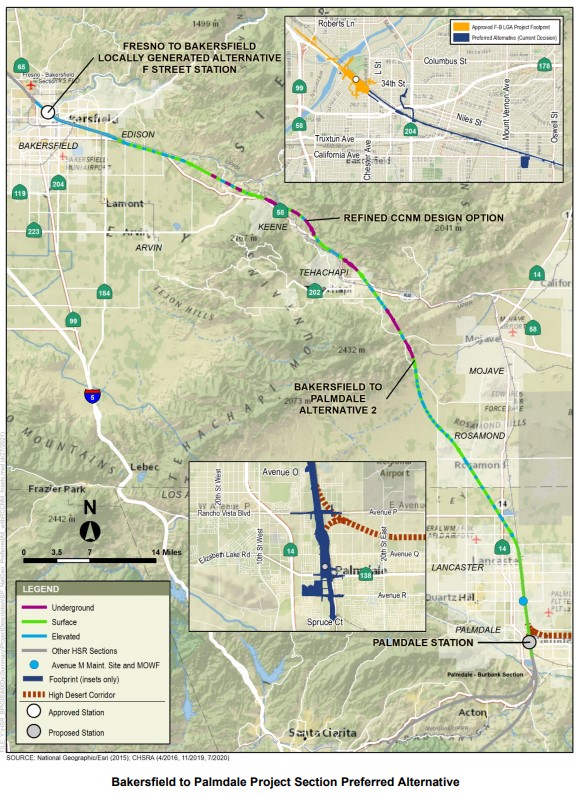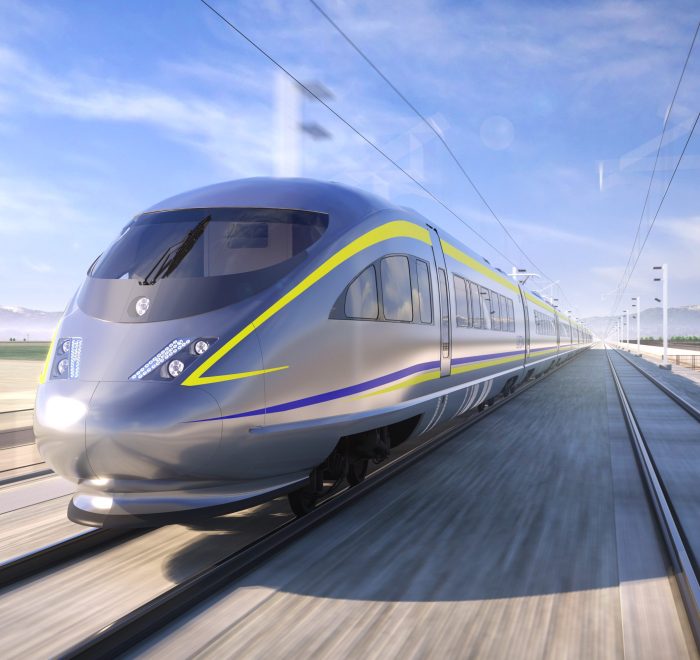Yesterday, the California High-Speed Rail Authority approved the final Environmental Impact Report/Environmental Impact Statement (EIR/EIS) for the 82-mile $19.7 billion Bakersfield to Palmdale section. That segment would bring high-speed rail into northern Los Angeles County.
The CAHSRA currently has 119 miles of high-speed rail under construction through California's Central Valley. That initial Central Valley segment will operate between Bakersfield and Merced, with conventional-speed rail connections to San Francisco, Oakland, and San Jose. HSR will reach San Francisco directly some years after that.

From Bakersfield, building south requires crossing the Tehachapi Mountains, which isn't easy or cheap. The plan calls for nine tunnels, totaling over ten miles, and fifteen miles of aerial structures. See SBCA's 2020 interview for more Bakersfield to Palmdale rail details.
There are still many more steps before the Bakersfield to Palmdale segment becomes a reality.
First, there are a few more administrative approvals. The CAHSRA will need to issue a Record of Decision (under federal environmental law - the National Environmental Policy Act, or NEPA) and to file a Notice of Determination (under state environmental law - the California Environmental Quality Act, or CEQA.)
And then there's the funding.
CAHSRA is still fighting for the legislature to approve Governor Newsom's proposal to release $4.2 billion in already-voter-approved Prop 1A bond funding largely to complete the Merced-to-Bakersfield segment. This proposed funding is supported by construction worker unions, but opposed by Southern California politicians pushing dubious schemes to divert the money to their districts.
This week's approval doesn't solve the funding questions, but it does put the Bakerfield-Palmdale section in a good position to catch some federal infrastructure money. President Biden has signaled his support for funding electric high-speed trains in the state. Getting more CAHSR sections "shovel-ready" means they will be better positioned to get those federal funds.






